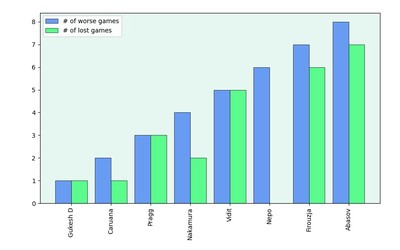
Comparing Stats from Erigaisi's Open and Closed Tournaments
Recently, I got very interested in the play of Arjun Erigaisi, not only because he made the jump into the top 10 but also because he did this by playing many open tournaments.There are many discussions about the differences between open and closed tournaments, the main question being if top players can just preserve their rating by playing in closed events. I don't really agree with this, but what is clear to me is that the different types of tournaments demand different skills from the players in order to perform well.
So I thought it would be interesting to use the various stats I developed in recent posts in order to compare Arjun's performance in open and closed tournaments.
My expectations
Since top players usually face significantly weaker opposition in open tournaments, my feeling going into this project was that their play will also differ quite a bit.
Firstly, I thought that top players would play less book moves in order to get out of their opponent's preparation. By just playing a game where no player relies on specific preparation, the stronger player should be able to generate more winning chances. Or at least they would avoid forcing line which lead to drawn positions.
I also thought that the decisions during the game might be a bit different. When playing against weaker opponent's, I thought that the stronger player will take more risks in order to keep the game going. This should be reflected in the sharpness change score and maybe also in the accuracy of their play.
Results
For the analysis, I tried to pick very recent games, since Arjun is still only 20 and I didn’t want to go too far back in time since his play might be significantly stronger now than it was even a year ago.
For the open tournaments, I picked all 37 games from the Mencora Open, Grenke Open, FIDE Grand Swiss and Qatar Masters.
For the closed tournaments, I used 32 games from Tepe Sigeman, the Shenzhen Masters, the Chennai Masters and Biel.
Note that I normalised everything so that the different number of games doesn’t affect the statistics.
Book Moves
I’ve looked at the book moves as described in a previous post and got the following results: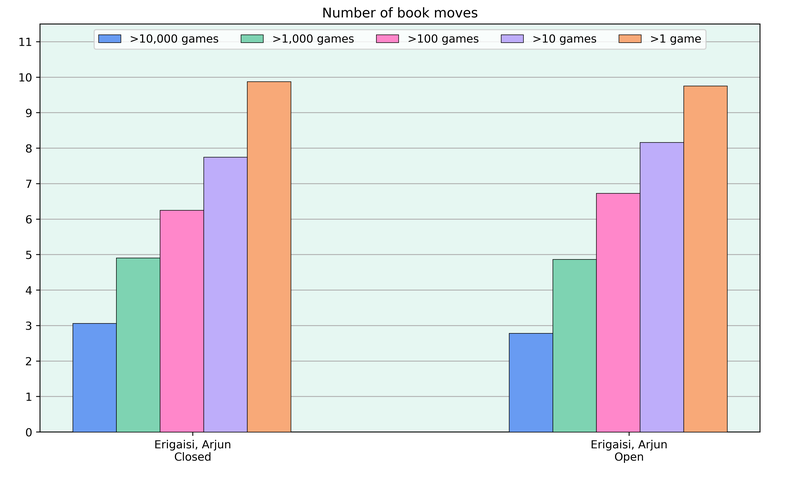
There aren’t big differences between the number of book moves per game in open and closed tournaments. The biggest difference is that in open tournaments, Arjun had more moves where there are less than 1,000 games in the database and less moves with 1,000-10,000 games in the database.
This could indicate that he chooses rarer lines in open tournaments, but the differences are very small, so I’m unsure if the differences are significant.
Accuracy Distribution
In order to look at the quality of play, I generated the accuracy distribution for Arjun’s open and closed tournaments.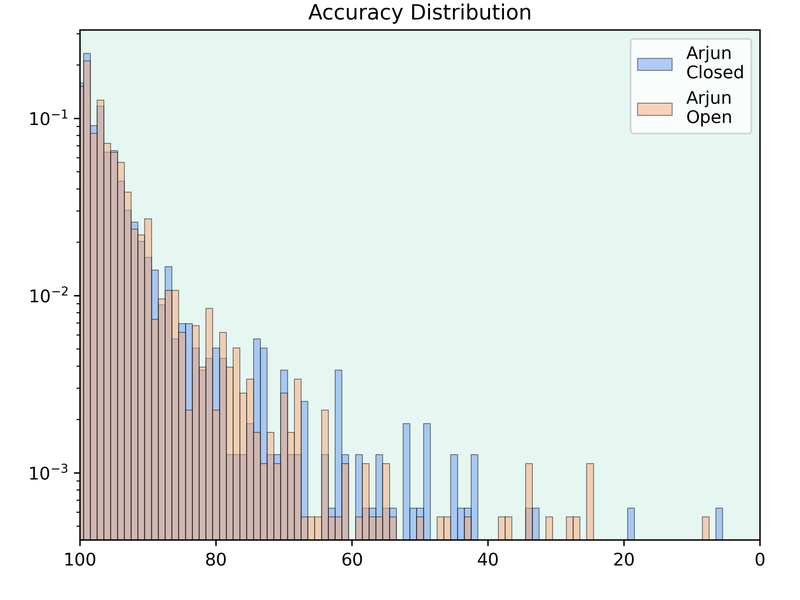
The two distributions look very similar, especially in the accuracy range from 100 to 80. But there are more moves in open tournaments with an accuracy between 70 and 80 and in closed tournaments there are more moves with an accuracy from 70 to 40.
This is the opposite of my expectation, since I thought that playing in open tournaments would lead to more risk-taking and therefore less accurate moves. But the other explanation is that on average, the opposition in closed tournaments is much stronger, so Erigaisi will have more challenging positions and therefore make more inaccuracies and mistakes.
Sharpness
Finally, I thought that it would be very interesting to look at the average sharpness change per move in the different tournament formats.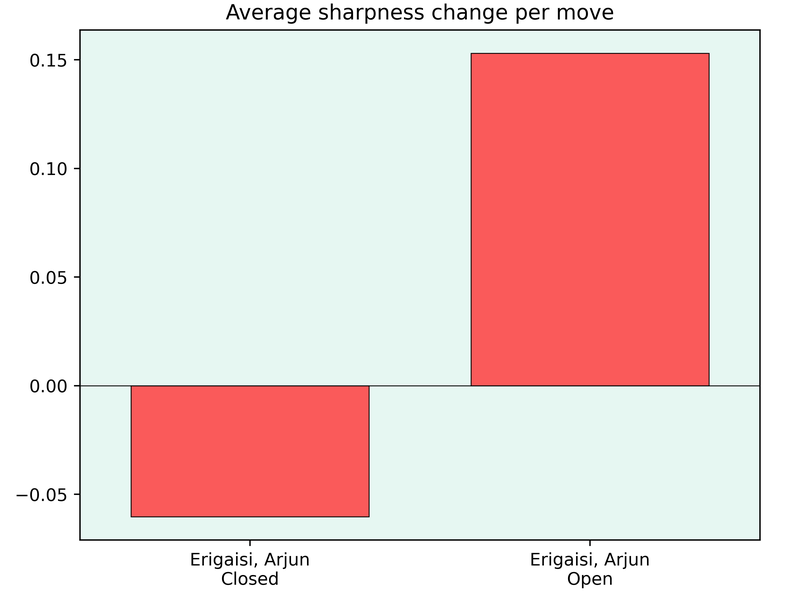
The sharpness change per move is significantly higher in open tournaments, which would indicate that Arjun is trying to steer his games in open tournaments towards sharper positions in order to be able to play for a win.
Conclusion
The results are certainly very interesting, but I’m not quite sure how many conclusions can be drawn from them. I had hoped that the differences between open and closed tournaments would be more pronounced.
But thinking about it, there are probably at least 2 rounds in every open tournament where Arjun faces 2650+ opponents, which means that he probably won’t go all out for wins in these games. I also think that there are many draws in the final rounds of open tournaments. In the games I analysed, there was one 8 move draw between Arjun and Fedoseev from the Menorca Open.
One different approach would be to categorise the games based on the rating difference between the players. But picking the games based on that felt like it introduced a bias into the dataset and I also think that there aren’t too many games with a big rating difference (150+ points) since there are many 2600 players playing in these big open tournaments.
Let me know what you think about the stats and if you have any suggestions for improvements and other ideas I can look into.
If you enjoyed this post, check out my Substack.
More blog posts by jk_182

Using Stockfish to identify ideal squares
How can an engine be used to answer positional questions?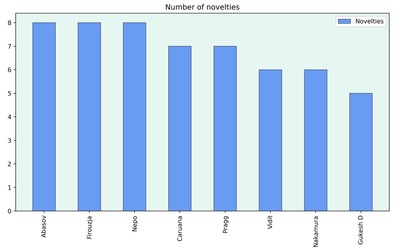
Opening novelty rates of the 2024 Candidates
Who played the most novelties in the Candidates?
Testing Maia's Puzzle Performance
How strong are the Maia engines when solving tactics?